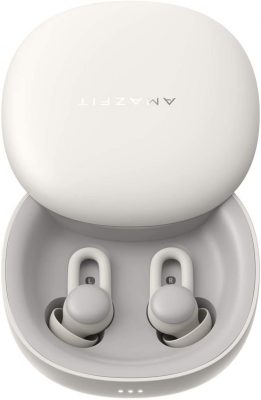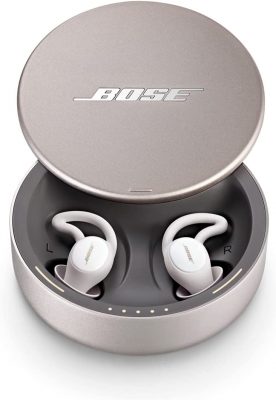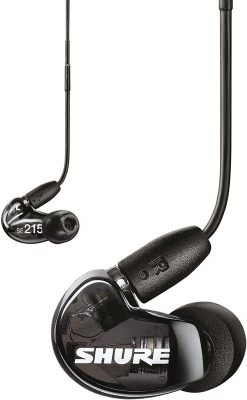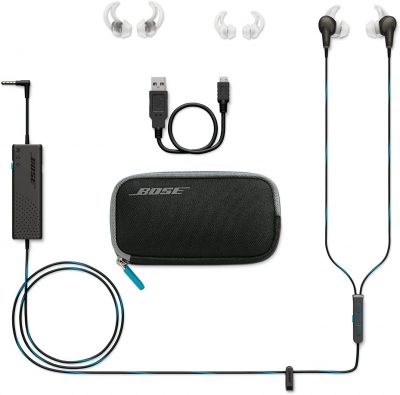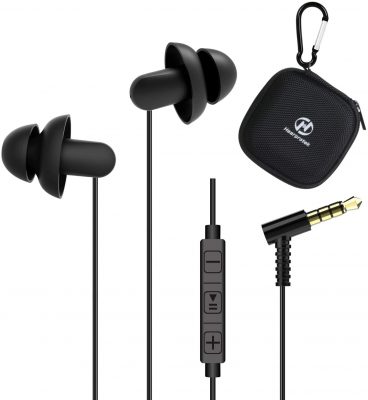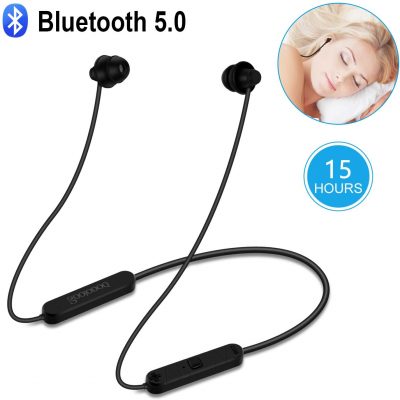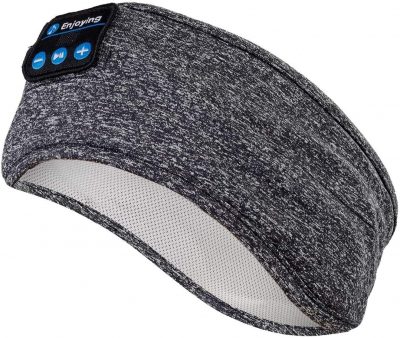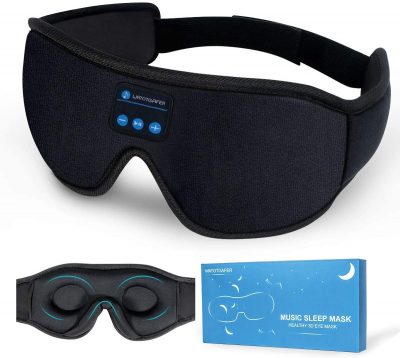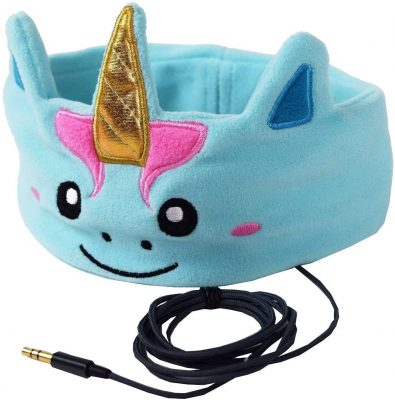Playing music or white noise is helpful if you are having difficulty falling or staying asleep. You can use a speaker, but if a noisy bedroom is what prevents you from having a good rest, getting a pair of headphones for sleeping should solve your problem. The best headphones can block ambient noises and highlight soothing sounds.
We have already featured different types of headphones on our website. There are the best true wireless earbuds, best over-ear headphones, and even the best bone conduction headphones. Not all of them can be good pairs of sleep headphones, though. If you tried wearing AirPods to bed, you should know that they can be terrible with all the tilting happening while you are sleeping. A single move can easily knock them out of your ears. Though there is no question on the audio quality they provide, the design and form factor is a different conversation.
This article picks the best headphones for sleeping that strikes a balance between design and output quality. In terms of the type, this list will include a mix of wireless headphones, earbuds, and wired headphones, among others.
Best Headphones for Sleeping
Standout Features:
- Noise-blocking design
- Sleep quality monitoring
- Power-efficient
Amazfit Zenbuds is our top pick for the best headphones for sleeping. Aside from blocking ambient noise, it also has sleep monitoring features that track your movements and sleep orientation. Using the feature, you can tell whether you are a side sleeper or someone who sleeps in the back or stomach. While some are skeptical about its accuracy, it can be a good jump-off point to gauge the quality of sleep you are getting. If you are moving a lot, chances are you are not getting quality rest at night.
If it’s a snoring partner or a barking dog that is constantly interrupting your sleep, Amazfit Zenbuds can help you all the more. Using its companion app, the Zepp App, you can transfer a pre-recorded sound directly to the earbuds and play it in the loop. However, you should take note that Amazfit Zenbuds cannot stream music other than what its companion app has.
The silver lining is that it doesn’t need to keep a constant Bluetooth connection since the sound lives inside the earbuds themselves. That way, its battery can effortlessly make it through the night. Instead of active noise cancelation, which is power-intensive, Amazfit Zenbuds also make use of a noise-masking in-ear design to passively block unwanted noises. If you want to push the battery even further, you can configure the earbuds in the app to automatically stop playing after you fall asleep or set a playtime duration.
Standout Features:
- Winged ear tips for a secure fit
- Noise masking and passive noise blocking
- Massive environmental tonal and soothing sound library
Bose Sleepbuds II is the most premium pair of sleep headphones on this list. By premium, we don’t just mean expensive but superb performance as well. This pair of small earbuds overhauls its unsuccessful predecessor in every angle to give you a night of uninterrupted eight-hour sleep.
Let’s talk first about its form factor. We would say that Bose Sleepbuds II is carefully designed to give its users utmost comfort. In terms of size, it’s small enough to fit without sticking out from your ears. Its soft-touch plastic and anti-friction coating scream secure fit and comfort as well. It also has silicone ear tips for a gentle seal that, by itself, can block ambient noises. This is helpful if you are a light sleeper because you will no longer have to play sounds just to mask the noises around.
Speaking of playing sound, we want to be clear that the Bose Sleepbuds II isn’t for streaming music — and that leads us to the biggest shortcoming of these sleep headphones. It comes with a companion app where you can choose various sounds to play. While you can connect it to your phone, it uses a low-energy Bluetooth connection that can only handle low-frequency sounds but not music or podcasts. Thankfully, it has a huge collection of sounds that you can listen to such as natural sound and soothing tones that are clinically proven to improve sleep.
Standout Features:
- 37 dB sound-blocking
- Durable build quality
Shure doesn’t market its wired AONIC 215 earbuds as headphones for sleeping, but it might as well be because of its impressive sound-isolating technology. If you are a light sleeper that could wake up to the tiniest sound, this pair of headphones might be the perfect sleep companion for you. It can block up to 37 decibels (dB) of noise so you can keep your stroll in the dreamland. It also has an over-the-ear design that hooks at the back of your ear, giving it a secure fit and keeping your music in.
As it is a wired headphone, though, it’s not for every type of sleeper. For instance, if you are a side-sleeper, you might find its wire running on the side of your neck a bit annoying. You may also have to position yourself just right to avoid pressing the earbuds into your ears and ending up waking up with painful ears. Regardless, the AONIC 215 could still potentially be the best headphones for sleeping, especially if you are looking for a cheaper alternative that delivers.
Standout Feature:
- Active noise cancelation
- Aware mode option
For more intrusive noises, such as ongoing road construction or car horns, you need more powerful sound-masking and noise-canceling headphones. Thankfully, Bose QuietComfort 20 (QC20) checks all the marks for noise-canceling and sleep headphones. It’s rare that we see a wired headphone with an active noise-cancelation, but Bose’s first entry to this unique combination surprisingly works.
First, its earbuds are very comfortable to wear. It has a soft flap on both earbuds that helps them cling into your outer ear and create a secure fit. Unlike regular earbuds with round ear tips, you don’t have to shove QC20 so far in your ear canal just to passively block noises.
QC20 comes with a battery pack that is necessary to power the noise-canceling feature. While it’s a bit bulky and cumbersome, it shouldn’t be a problem regardless of your sleeping position since you can just put it on the side of the bed. It also has a separate control module for switching between noise-canceling and “Aware mode”. When noise cancelation is on, QC20 can block at least 45 dB without you playing any music. Its battery can last up to 16 hours and would still play your music after that, sans noise canceling.
Standout Feature:
- Double-layered ear tip design
- Passive noise cancelation
If you don’t have the budget for a sleep headphone that has an active noise cancelation, Hearprotek II is a good catch. While its noise reduction is not as effective as QC20, it should work once you start playing music or white noises.
The Hearprotek II has double-layered ear tips made of soft silicone material. Not only do they create a tight hold on your ear canal but they also create a natural sound isolation feature that blocks ambient noises around you. Leading to its Y-section is the control module for adjusting volumes, pausing/skipping tracks, and answering calls.
Since Hearprotek II is wired and doesn’t need a battery for its passive noise cancelation, you can use it at any given time. Aside from being one of the best headphones for sleeping, it’s also a perfect companion for travel, work, or even exercise.
GOOJODOQ
Standout Features:
- Noise-blocking design
- Low-power Bluetooth transmission
- 15 hours music time
If you need something stronger than white noises, like music or a podcast, to drown the annoying sounds in your neighborhood, the GOOJODOQ Bluetooth sleep headphones are a worthy pick. This non-brand headphone is standing out from the rest because of its affordable price and decent performance.
It has all-silicone earplugs combined with a noise-isolating design that blocks out background noise while keeping your music in. Its battery is pretty capable too, which can deliver an approximate 15-hour performance for a two-hour charge. Thanks to its CSR Bluetooth 5.0, it can also maintain a stable, lower-power signal transmission from any Bluetooth-capable device.
Needless to say, though, the GOOJODOQ Bluetooth headphones for sleeping don’t go without some flaws. One of which is the fact that it’s not completely wireless. If you flip a lot in your sleep, pulling out its neckband is not very hard. However, some customer reviews expressed that it’s not bothersome when you sleep on your side consistently.
Standout Features:
- Versatile headband design
- Playtime of up to 10 hours
This headband slash headphone doesn’t look premium, but it might be the only answer that you have been looking for to address your sleeping problems. Enjoying Bluetooth Sports Headphones is a stretchable headband made out of soft fabric with breathable mesh lining. Inside is a pair of wireless sleep headsets, which you can easily slide out if you want to wash the fabric.
Performance-wise, it can deliver but not to the level of audiophile headphones. It doesn’t have a noise cancelation feature, noise masking, or sound isolation, which are forgivable given its under $20 price tag. But unlike other sleep headphones in this list, Enjoying Bluetooth Sports Headphone is not limited to playing white noises. By connecting it to a Bluetooth device, you can stream any music from any platform you like.
The headphones’ battery capacity is reliable too. When fully charged, its 240mAh high-performance battery can give you a 10-hour total playtime. Aside from sleeping, you can also use the headphones for yoga, running, or any type of exercise.
Standout Features:
- Headphones and eye mask in one
- 3D eye mask design
Lightimetunnel is hitting two birds with one stone or, in this case, one headphone. Not only is it a sleep headphone, but it also doubles as an eye mask. Perfect for someone sensitive to light, Lightimetunnel is designed with comfort and function in mind. It has a 3D design that creates cups so that the fabric won’t touch your eyelids while still preventing light from passing through. It also has memory foam that minimizes pressure on your eye sockets and nose area.
Its Bluetooth headphones are something that could also easily pass considering its pricing. You can connect those to your phone via Bluetooth to stream music or play soothing sounds from your favorite white noise app. With 2 to 2.5 hours of charge, Lightimetunnel can last up to eight hours of playtime.
Some users, however, noted that wireless headphones tend to push on the wrong spot when you lay on your side. Nevertheless, Lightimetunnel has got a high customer rating on Amazon.
Standout Features:
- 90 dB volume limit
- Child-friendly and appealing design
Difficulty in sleeping rarely happens to children. That said, there are factors that can prevent them from drifting to sleep like bedtime fears. Allowing them to listen to music or lullabies can help calm and eventually lull them. In doing so, the CozyPhones can lend a hand.
Made specifically for kids, this headband-type headphone limits the volume to 90 dB to keep their listening at the recommended safe level. Because its material is made from stretchable cloth, it can comfortably fit in any head size and stay in place.
CozyPhones come in different designs, such as unicorns, superheroes, and cartoon characters. So, the said best headphones for sleeping can suit girls and boys.
Choosing Headphones for Sleeping [Buying Guide]
We have listed the best sleep headphones above, but as we mentioned earlier, they vary in terms of types. To pick which of them can suit you well, you need to know your sleeping habits first. So, here’s a comparison of every sleep headphone type and which you should pick.
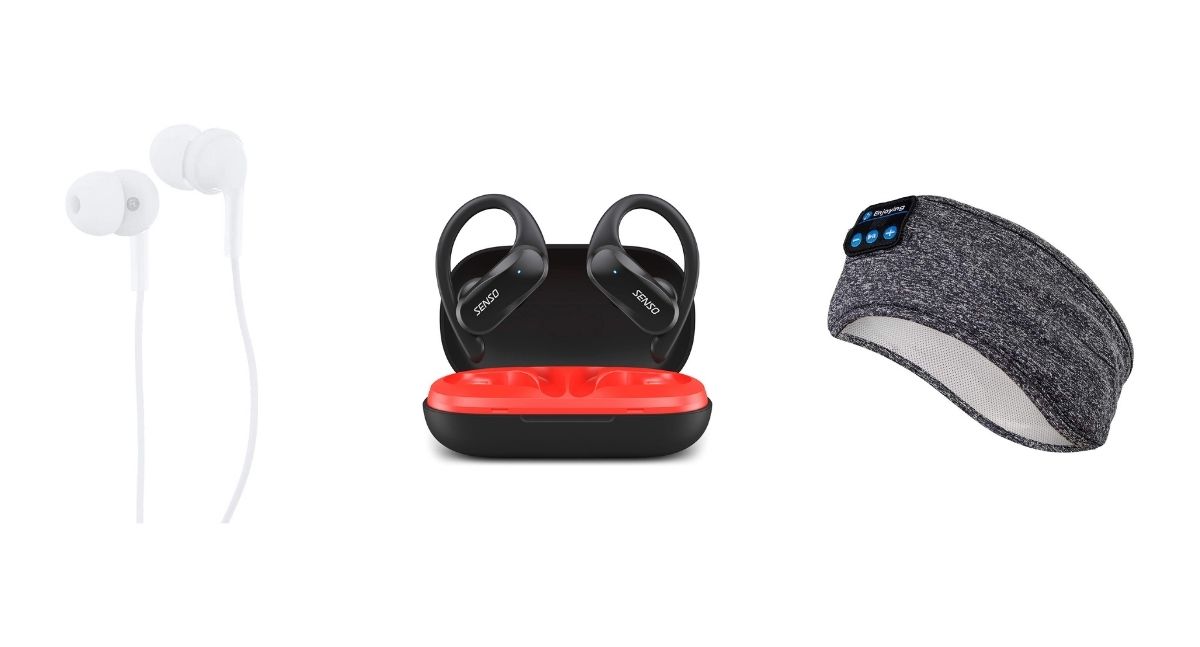
Earbuds vs On-Ear Headphones vs Headband
An earbud is a type of headphone that has removable rubber ear tips. They serve as suction cups that adhere tightly when shoved to your ears. On-ear headphones, on the other hand, normally have a loop that goes to the back of your ears so that they will stay in place. Lastly, headband headphones look like an ordinary wraparound fabric, only with tiny speakers inside.
On-ear headphones and headband headphones are both good choices for a sleep companion. Although there is added weight for the former and the latter might be uncomfortable if you sweat a lot, both stay in place neatly even when you flip a lot in your sleep. On the other hand, ordinary earbuds can easily fall from your ears if you switch sleep positions. Thankfully, some brands, such as Bose and Amazfit, have addressed this problem by adding a rubber wing or shoulder to the ear tips so they can hold on to your ears more tightly.
Wireless vs Wired Headphones
Wireless headphones are on trend today because of their portability and, admittedly, swag. With wireless technology, which is not limited to Bluetooth, you can simply pair them to the device where you want to stream music — no more tangled cables. Wireless sleep headphones are the choice for many because they are less complicated to wear. But, we cannot completely disregard wired headphones that can be used when sleeping.
Using the traditional plug-and-play method, wired headphones are more power-efficient. Aside from the fact it doesn’t use a battery, they are also less power-draining on the devices where you stream music. In terms of audio quality, it is also more superior to wireless headphones just because it lacks interferences and latency. Although its cable can cause some problems, you should pick wired headphones over wireless if you value performance over portability.
Passive vs Active Noise Cancelation
A good pair of headphones for sleeping should have a noise-canceling feature to block the noises that prevent you from drifting to sleep. There are two types of noise cancelation — active and passive.
Active noise-canceling (ANC) headphones use built-in microphones to detect unwanted sounds outside and neutralize them with a second sound before it reaches the ear canal. ANC headphones use sophisticated chipsets to invert sound waves, that’s why headphones of this type are normally expensive.
On the other hand, passive noise-canceling relies on form-factor and design to seal out unwanted sounds. Instead of using chipsets, passive noise-canceling headphones create physical noise blocks like ear cups.
However, neither ANC nor passive noise-canceling can completely drown out noises on their own. If you are eyeing noise-canceling earbuds that can help you get a good rest at night, it is better to choose the one that combines active and passive noise-canceling.
Are Headphones for Sleeping Safe to Use?
Listening to music and white noises are proven to improve sleep by calming your nervous system. However, without moderation, it can also affect your health.
Since headphones feed music directly to your ears, there should be some control over the loudness and duration of using them. According to Harvard Health Publishing, prolonged exposure to sounds louder than 85 dB (equal to a lawnmower) can cause hearing damage. When using headphones, however, at least an hour of exposure to this level is enough to injure your ears. Therefore, when using sleep headphones, it is better to keep your sound level at a lower rate.
Since your playtime duration is likely to go unnoticed when you are asleep, you should set an automatic stop for your headphones. Thankfully, many headphones made for sleeping have this feature already. Alternatively, you can set a sleep timer if you are using streaming apps like Spotify and Apple Music.
Can’t Sleep Yet?
When used properly, the headphones above can block noises that prevent you from dozing off. But if you still can’t sleep, maybe it isn’t the outside noise that’s causing your restlessness. There are many factors that can contribute to this and some of them come internally. Maybe your inner voice is coming into play. Or maybe you are stressed out about an upcoming presentation the next morning. If this constantly happens, there might be a deeper reason for it and you might need to consult a sleep therapist.

